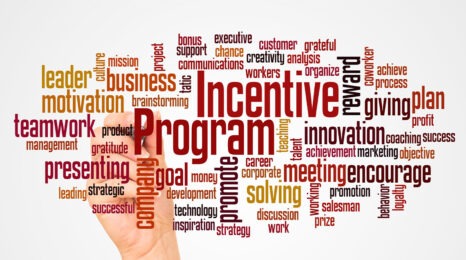Incentive Travel Industry Index: Budgets are increasing, but cost-management is a priority
Even SITE Foundation President John Iannini was surprised. Results from the industry’s first joint study of the incentive travel industry found that perceptions of the effectiveness of Incentive Travel programs have risen significantly across all regions as more companies understand the impact incentives can have on sales and employee engagement.
More: Breaking Brand News from #IMEX18
Conducted by JD, Power, the study—underwritten by SITE Foundation, Incentive Research Foundation (IRF) and Financial and Insurance Conference Professionals (FICP)—was the biggest research project to ever measure incentive travel by volume and geographical spread. The survey queried 1,000 respondents from 80 countries about everything from budgets and motivation to favorite destinations.
Iannini described the report as a collaboration of three organizations with very different profiles and constituency groups: a professional society for incentive travel professionals, a foundation dedicated to the entire incentive industry and corporate end-users.
“Results prove that the industry is continuing to thrive and grow,” said SITE CEO Didier Scaillet.
Findings include the following.
- Fifty-four percent of buyers report an increase in budgets year-over-year.
- Sixty-five percent of buyers are increasing the number of incentive program qualifiers, fueled by company growth and optimism in the economy.
- While the average per-person spend remains stable at $4,000, corporate users report a higher average spend ($4,550) than incentive agencies.
- Two-thirds of corporate users and more than 80 percent of incentive agencies are taking cost management steps, such as using less expensive destinations (30 percent), all-inclusive destinations (26 percent) or less-expensive amenities.
- Sales and profitability remains the top reason to run an incentive program, but more importance is being given to building relationships between management and employees, increasing productivity and employee engagement.
- An overwhelming majority of buyers say their incentive travel programs have been “very effective” or “somewhat effective” in achieving their most important objectives, although only one-quarter always measure program results.
- Impact on the personal and professional development of the qualifier is the most important outcome of incentive travel programs both for buyers and sellers, with corporate users finding it more important than incentive agencies.
- North America, the Caribbean and Western Europe remain the most popular destinations for incentive travel, with destination appeal being the top criteria for selecting one destination over another, followed by safety and cost effectiveness.
- Buyers in Asia-Pacific put a greater emphasis on sustainability than buyers in North America.
- Although the threat of terrorism remains a concern, it appears to have reached a plateau.
- While 39 percent of buyers say their programs always include a meeting component, this percentage doubles to 78 percent for financial and insurance companies. These organizations also spend more per person—$6,000 vs. $3,950 for all other industries.
- In 2018, fewer buyers “almost always or always” track incentive travel programs’ return on investment and return on objective (25 percent versus 28 percent in 2017). The primary reason given is that “management doesn’t require it.”
Budget Ups and Downs
Iannini theorized that the reason the number of incentive travel qualifiers has increased more than 30 percent is due to a rise in mergers and acquisitions—sparking a need for team building, and a tight labor market that has led to a war for talent. “Better relationships between employees and management” went from No. 5 in 2017 to No. 2 in 2018. Meanwhile, “better relationships between employees with each other” also rose from No. 7 to No. 5.
For those who decreased use of travel incentive programs, a downturn in business was given as the main reason, even though increasing incentive travel during a slowdown has been shown to be the fastest way to turn the trend around.





